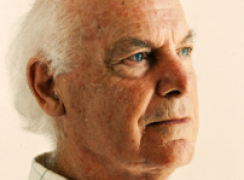Dr Sam Parnia
Director of the Human Consciousness Project |
Those questions are: what is the origin of life as we know it today, and what happens to us when life comes to an end? Both the Hadron collider launched by the European Organization for Nuclear Research, and the more modest AWARE project launched by the University of Southampton, are scientific endeavours that may alter the way we understand and think of ourselves. The former aims to study what happened during the first few moments after existence began - but the latter explores what happens after existence and human life as we know it ceases to be. Although traditionally perceived as a subject for philosophical or theological debate, recent advances in medicine have enabled a scientific approach to answering this age-old question. Death 'is a process'
Studies have found that 10-20% of people have near death experiences
|
In fact, death is a process that begins when the heart stops beating, the lungs stop, and as a consequence within a few seconds the brain ceases functioning and enters into a 'flatline' state. From this point on, oxygen deprivation leads brain cells into a 'panic' state before they incur substantial damage and ultimately die over a period of minutes to hours. So the question is: at what point during this process does the human mind and consciousness cease its activity?
Is it at the moment the heart stops beating, or is it a few seconds, minutes - or even hours after the process of death has initially begun? And what is the relationship between the mind and the brain during the state of clinical death? These fascinating issues serve as the backdrop for the launch of the AWARE study, the world's largest ever scientific study of what happens when we die. This study uses a combination of sophisticated brain-monitoring techniques to study the brain, while also employing an innovative method to study the mind and consciousness during clinical death. Touching the void Although many independent studies have shown that the brain reaches a 'flatline' state during clinical death, it has consistently been shown that 10-20% of people who are revived back to life report some activity of the mind.
At what point does the human mind and consciousness stop its activity?
|
These observations have raised the intriguing - and controversial - possibility that the mind and consciousness may continue functioning after we have reached the point of death and the brain has shut down. While an absolute impossibility to many scientists, for those who have experienced them and their respective doctors they are real. The key for science is to determine whether these experiences are illusions or whether they are real. During AWARE, investigators will place images strategically in hospital bays, such that they will only be visible by looking down from the ceiling and nowhere else. If after 36 months, hundreds of patients report being "out of body" yet no one can report seeing the images, then we must consider these reports to be nothing more than illusions. If on the other hand there are hundreds of positive reports, then we will have to redefine our understanding of the mind and brain during clinical death. For now though, only time will tell what the AWARE study will possibly reveal about our beginnings and our inevitable end.
BBC/Health/ New / September 2008

No comments:
Post a Comment